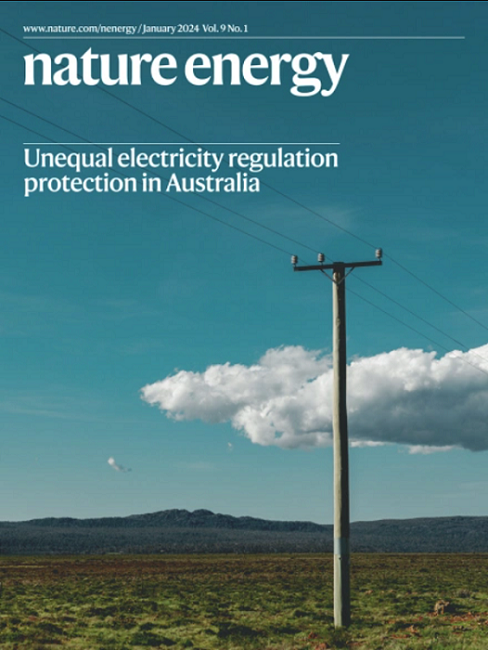Unveiling zinc anode corrosion
IF 60.1
1区 材料科学
Q1 ENERGY & FUELS
引用次数: 0
揭示锌阳极腐蚀
锌电池因其安全、低成本和高容量等优点,在电网规模储能方面具有很大的应用前景。其吸引力的一个关键部分在于在阳极使用金属锌,这是丰富的,无毒的,和水相容。然而,即使电池处于静止状态——不充电或放电——锌阳极也会逐渐被腐蚀。现在,来自华威大学、牛津大学和中南大学的袁毅、亚历克斯·罗伯逊及其同事揭示了这种微妙退化背后的机制。利用原位电化学液体电池透射电子显微镜,他们直接观察了锌金属阳极在最常用的水性电解质(基于弱酸性硫酸锌的电解质)中的腐蚀过程。他们的研究表明,腐蚀发生在两个阶段:首先,金属锌溶解到电解液中,释放氢气并增加局部pH值。这种pH值的变化导致碱性的、不溶性的羟基硫酸锌副产物的形成,这些产物具有多孔和松散的结构,逐渐耗尽锌并降低电池性能。令人惊讶的是,在阳极使用过量的锌——以前被认为是防止损失的安全缓冲——实际上会加速pH值的变化和腐蚀,从而加剧问题。相反,一种简单的电解质添加剂醋酸锌有助于稳定pH值,并显著减少这些损失。这项工作强调了一个微妙但重要的问题:锌阳极即使在电池不使用时也会腐蚀,从而影响保质期、安全性和性能。研究结果强调了仔细平衡锌含量和电解质成分以提高电池寿命的重要性。随着锌电池越来越接近实际应用,理解和控制这种隐藏的降解过程可能是锌电池长期成功的关键。
本文章由计算机程序翻译,如有差异,请以英文原文为准。
求助全文
约1分钟内获得全文
求助全文
来源期刊

Nature Energy
Energy-Energy Engineering and Power Technology
CiteScore
75.10
自引率
1.10%
发文量
193
期刊介绍:
Nature Energy is a monthly, online-only journal committed to showcasing the most impactful research on energy, covering everything from its generation and distribution to the societal implications of energy technologies and policies.
With a focus on exploring all facets of the ongoing energy discourse, Nature Energy delves into topics such as energy generation, storage, distribution, management, and the societal impacts of energy technologies and policies. Emphasizing studies that push the boundaries of knowledge and contribute to the development of next-generation solutions, the journal serves as a platform for the exchange of ideas among stakeholders at the forefront of the energy sector.
Maintaining the hallmark standards of the Nature brand, Nature Energy boasts a dedicated team of professional editors, a rigorous peer-review process, meticulous copy-editing and production, rapid publication times, and editorial independence.
In addition to original research articles, Nature Energy also publishes a range of content types, including Comments, Perspectives, Reviews, News & Views, Features, and Correspondence, covering a diverse array of disciplines relevant to the field of energy.
 求助内容:
求助内容: 应助结果提醒方式:
应助结果提醒方式:


